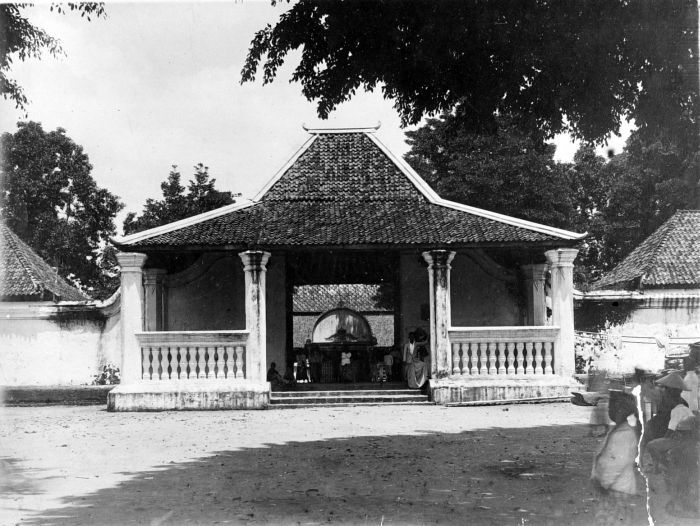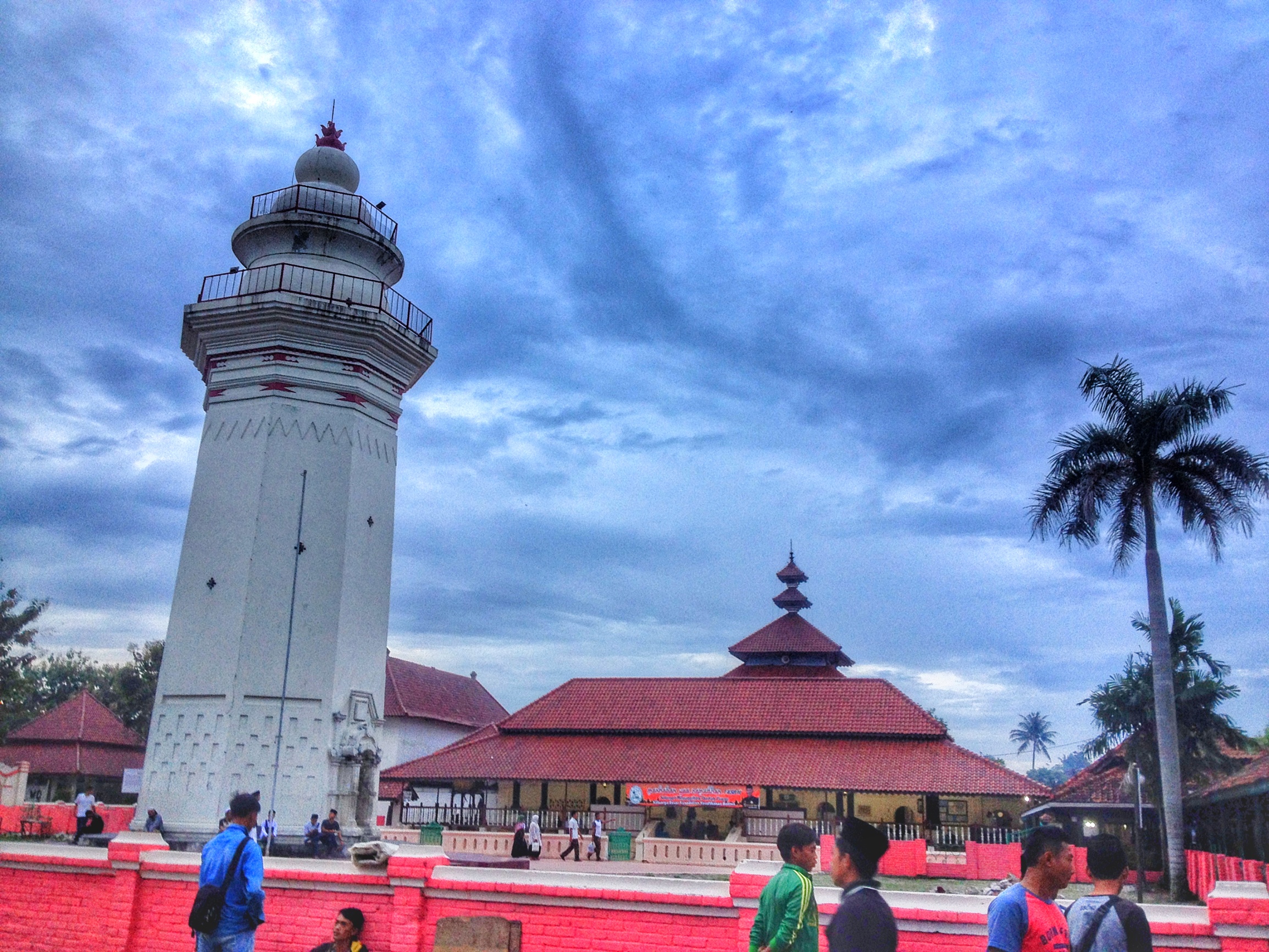|
Kauman Great Mosque
Kauman Great Mosque, approximate English translation of Javanese Mesjid Gedhe Kauman (officially ''Mesjid Gedhe Kauman Karaton Ngayogyakarta Hadiningrat'') is a Great Mosque of the Yogyakarta Sultanate in Java, Indonesia. It is located to the west of the North ''Alun-alun'' (public square) of Yogyakarta Kraton. History The mosque was established in the Kauman, an Islamic quarter near the kraton whose establishment is strongly related with the establishment of Yogyakarta in 1756 and the arrival of foreign Muslim leaders. Kauman Great Mosque was established by Hamengkubuwono I together with Kyai Faqih Ibrahim Diponingrat (the first headman of the Kraton) and Kyai Wiryokusumo as the architect. It was built on Ahad (Sunday) Wage, May 29, 1773 or 6 Rabi'ul Akhir 1187 in Islamic Calendar. Architecture Kauman Great Mosque is built in a typical religious Javanese architecture with its triple-tiered roof, lack of minaret, and a serambi. Kauman Great Mosque is built in over a walled com ... [...More Info...] [...Related Items...] OR: [Wikipedia] [Google] [Baidu] |
Yogyakarta
Yogyakarta (; jv, ꦔꦪꦺꦴꦒꦾꦏꦂꦠ ; pey, Jogjakarta) is the capital city of Special Region of Yogyakarta in Indonesia, in the south-central part of the island of Java. As the only Indonesian royal city still ruled by a monarchy, Yogyakarta is regarded as an important centre for classical Javanese fine arts and culture such as ballet, ''batik'' textiles, drama, literature, music, poetry, silversmithing, visual arts, and '' wayang'' puppetry. Renowned as a centre of Indonesian education, Yogyakarta is home to a large student population and dozens of schools and universities, including Gadjah Mada University, the country's largest institute of higher education and one of its most prestigious. Yogyakarta is the capital of the Yogyakarta Sultanate and served as the Indonesian capital from 1946 to 1948 during the Indonesian National Revolution, with Gedung Agung as the president's office. One of the districts in southeastern Yogyakarta, Kotagede, was the capital of t ... [...More Info...] [...Related Items...] OR: [Wikipedia] [Google] [Baidu] |
Minbar
A minbar (; sometimes romanized as ''mimber'') is a pulpit in a mosque where the imam (leader of prayers) stands to deliver sermons (, ''khutbah''). It is also used in other similar contexts, such as in a Hussainiya where the speaker sits and lectures the congregation. Etymology The word is a derivative of the Arabic root ''n-b-r'' ("to raise, elevate"); the Arabic plural is ''manābir'' ( ar, مَنابِر). Function and form The minbar is symbolically the seat of the imam who leads prayers in the mosque and delivers sermons. In the early years of Islam, this seat was reserved for the Islamic prophet Muhammad and later for the caliphs who followed him, each of whom was officially the imam of the whole Muslim community, but it eventually became standard for all Friday mosques and was used by the local imam. Nonetheless, the minbar retained its significance as a symbol of authority. While minbars are roughly similar to church pulpits, they have a function and position mor ... [...More Info...] [...Related Items...] OR: [Wikipedia] [Google] [Baidu] |
18th-century Mosques
The 18th century lasted from January 1, 1701 ( MDCCI) to December 31, 1800 ( MDCCC). During the 18th century, elements of Enlightenment thinking culminated in the American, French, and Haitian Revolutions. During the century, slave trading and human trafficking expanded across the shores of the Atlantic, while declining in Russia, China, and Korea. Revolutions began to challenge the legitimacy of monarchical and aristocratic power structures, including the structures and beliefs that supported slavery. The Industrial Revolution began during mid-century, leading to radical changes in human society and the environment. Western historians have occasionally defined the 18th century otherwise for the purposes of their work. For example, the "short" 18th century may be defined as 1715–1789, denoting the period of time between the death of Louis XIV of France and the start of the French Revolution, with an emphasis on directly interconnected events. To historians who expand ... [...More Info...] [...Related Items...] OR: [Wikipedia] [Google] [Baidu] |
Mosques In Indonesia
This is a list of mosques in Indonesia. The Indonesian term ''Masjid Agung'' is translated as "Great Mosque", while ''Masjid Raya'' is translated as "Grand Mosque." ''Masjid Keramat'' is translated as "Holy Mosque." ''Masjid Jami'' is translated as Jami Mosque which refers to the congregational mosque where the weekly Friday prayer takes place. These lists only include notable mosques. List of mosques in Indonesia As of 2020, a government team led by Fakhry Affan has registered 554,152 mosques in Indonesia. This consists of 258,958 congregational mosques and 295,194 small mosques which fit 40 people or fewer. The government estimates total number of mosques at more than 740,000 nationwide.Indonesia's 'mosque hunters' count them up one at a time ''Bang ... [...More Info...] [...Related Items...] OR: [Wikipedia] [Google] [Baidu] |
Javanese Architecture
Javanese may refer to: Of Java *Javanese people, and their culture *Javanese language **Javanese script, traditional letters used to write Javanese language **Javanese (Unicode block), **Old Javanese, the oldest phase of the Javanese language *Javanese beliefs *Javanese calendar *Javanese cuisine *Javanese Surinamese, an ethnic group of Javanese descent in Suriname Other *Javanese cat, a breed of domestic cat See also *Java (other) *Javan (other) Javan was a descendant of Noah, according to the Hebrew Bible. Javan may also refer to: * Something of, from, or related to the Indonesian island of Java Characters * Javan (''ThunderCats''), a character in the animated series ''ThunderCats'' ... * * {{Disambiguation Language and nationality disambiguation pages ... [...More Info...] [...Related Items...] OR: [Wikipedia] [Google] [Baidu] |
Religious Buildings And Structures Completed In 1773
Religion is usually defined as a social-cultural system of designated behaviors and practices, morals, beliefs, worldviews, texts, sanctified places, prophecies, ethics, or organizations, that generally relates humanity to supernatural, transcendental, and spiritual elements; however, there is no scholarly consensus over what precisely constitutes a religion. Different religions may or may not contain various elements ranging from the divine, sacred things, faith,Tillich, P. (1957) ''Dynamics of faith''. Harper Perennial; (p. 1). a supernatural being or supernatural beings or "some sort of ultimacy and transcendence that will provide norms and power for the rest of life". Religious practices may include rituals, sermons, commemoration or veneration (of deities or saints), sacrifices, festivals, feasts, trances, initiations, funerary services, matrimonial services, meditation, prayer, music, art, dance, public service, or other aspects of human culture. Religions have sa ... [...More Info...] [...Related Items...] OR: [Wikipedia] [Google] [Baidu] |
Buildings And Structures In Yogyakarta
A building, or edifice, is an enclosed structure with a roof and walls standing more or less permanently in one place, such as a house or factory (although there's also portable buildings). Buildings come in a variety of sizes, shapes, and functions, and have been adapted throughout history for a wide number of factors, from building materials available, to weather conditions, land prices, ground conditions, specific uses, prestige, and aesthetic reasons. To better understand the term ''building'' compare the list of nonbuilding structures. Buildings serve several societal needs – primarily as shelter from weather, security, living space, privacy, to store belongings, and to comfortably live and work. A building as a shelter represents a physical division of the human habitat (a place of comfort and safety) and the ''outside'' (a place that at times may be harsh and harmful). Ever since the first cave paintings, buildings have also become objects or canvasses of much artis ... [...More Info...] [...Related Items...] OR: [Wikipedia] [Google] [Baidu] |
Gamelan
Gamelan () ( jv, ꦒꦩꦼꦭꦤ꧀, su, ᮌᮙᮨᮜᮔ᮪, ban, ᬕᬫᭂᬮᬦ᭄) is the traditional ensemble music of the Javanese, Sundanese, and Balinese peoples of Indonesia, made up predominantly of percussive instruments. The most common instruments used are metallophones played by mallets and a set of hand-played drums called '' kendhang/Kendang'', which register the beat. The kemanak (a banana-shaped idiophone) and gangsa (another metallophone) are commonly used gamelan instruments in Bali. Other instruments include xylophones, bamboo flutes, a bowed instrument called a ''rebab'', a zither-like instrument ''siter'' (in Javanese ensemble) and vocalists named '' sindhen'' (female) or ''gerong'' (male).Sumarsam (1998)''Introduction to Javanese Gamelan'' Middletown. Although the popularity of gamelan has declined since the introduction of pop music, gamelan is still commonly played in many traditional ceremonies and other modern activities in Indonesia, b ... [...More Info...] [...Related Items...] OR: [Wikipedia] [Google] [Baidu] |
Sekaten
Sekaten (originated from Arabic word: '' Syahadatain'') is a week-long Javanese traditional ceremony, festival, fair and pasar malam (night market) commemorating Maulid (the birthday of the Islamic prophet Muhammad), celebrated annually started on 5th day through the 12th day of (Javanese Calendar) Mulud month (corresponding to Rabi' al-awwal in Islamic Calendar). The festivities usually took place in northern ''alun-alun'' (square) in Yogyakarta, and simultaneously also celebrated in northern alun-alun of Surakarta. This ceremony originally were initiated by Sultan Hamengkubuwana I, the founder of Yogyakarta Sultanate to promote the Islamic faith. Gamelan Sekaten On day one, the ceremony commences after the Isya evening prayer with a royal procession of royal guards and 'abdi dalem' court officials accompanying two sets of centuries old gamelan traditional music instruments, the Kyai Nogo Wilogo and Kyai Guntur Madu. The royal procession, led by the Sultan and Governor of Y ... [...More Info...] [...Related Items...] OR: [Wikipedia] [Google] [Baidu] |
Qibla
The qibla ( ar, قِبْلَة, links=no, lit=direction, translit=qiblah) is the direction towards the Kaaba in the Sacred Mosque in Mecca, which is used by Muslims in various religious contexts, particularly the direction of prayer for the salah. In Islam, the Kaaba is believed to be a sacred site built by prophets Abraham and Ishmael, and that its use as the qibla was ordained by Allah in several verses of the Quran revealed to Muhammad in the second Hijri year. Prior to this revelation, Muhammad and his followers in Medina faced Jerusalem for prayers. Most mosques contain a '' mihrab'' (a wall niche) that indicates the direction of the qibla. The qibla is also the direction for entering the ''ihram'' (sacred state for the hajj pilgrimage); the direction to which animals are turned during ''dhabihah'' (Islamic slaughter); the recommended direction to make ''dua'' (supplications); the direction to avoid when relieving oneself or spitting; and the direction to which the deceas ... [...More Info...] [...Related Items...] OR: [Wikipedia] [Google] [Baidu] |


_p183_MIMBAR_IN_DJAMÄA_EL-KEBIR_(cropped).jpg)



